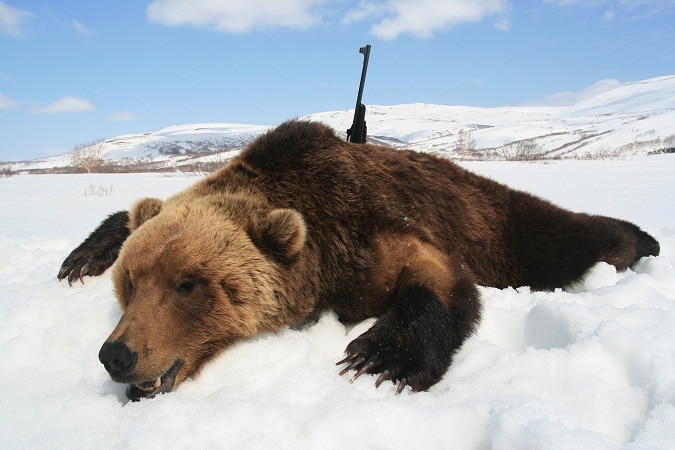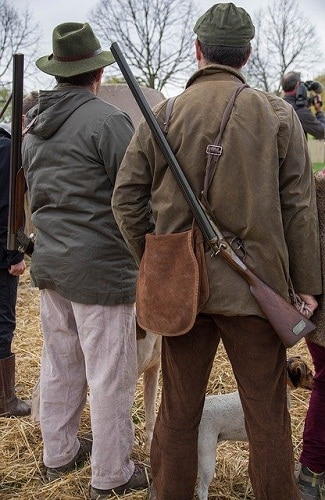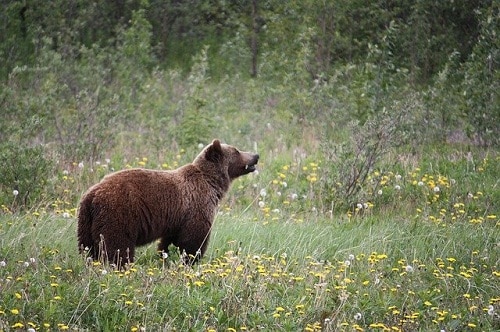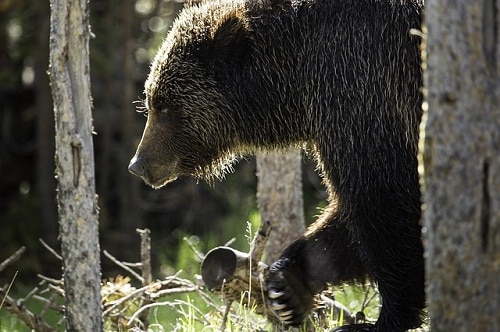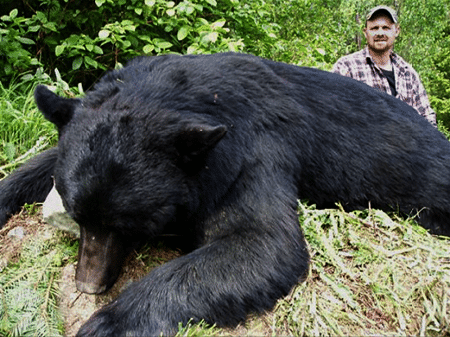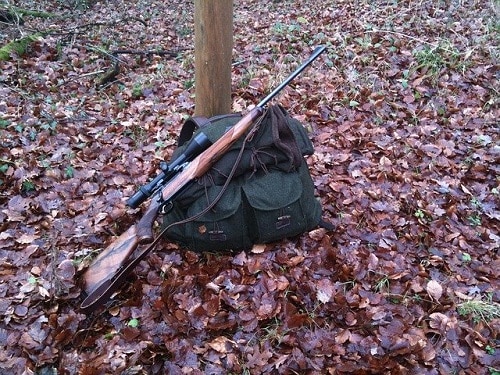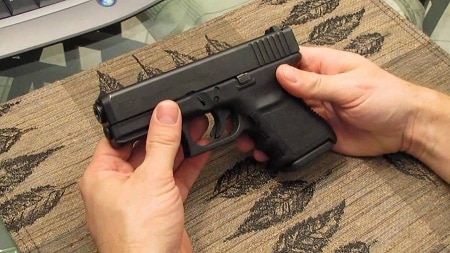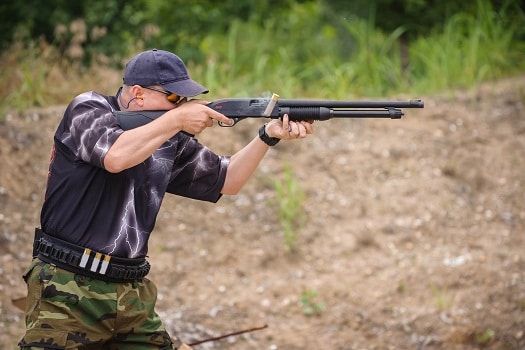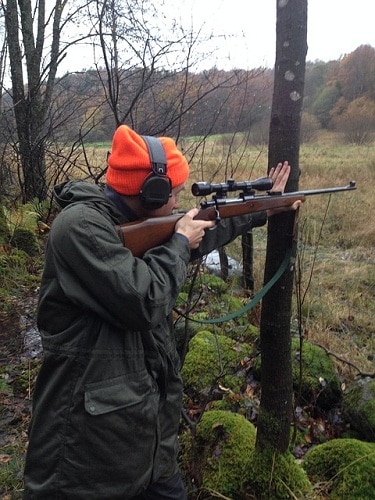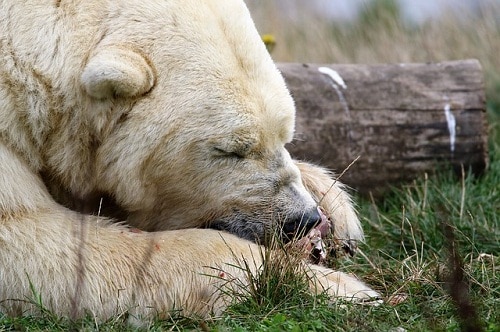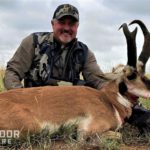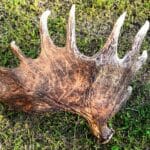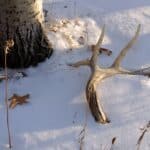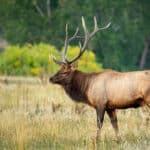Bear hunting isn’t like deer hunting.
Well, it is in some ways; you go into the wild armed with a weapon and attempt to overcome that wild animal.
But deer don’t weigh 500 pounds and won’t run at 30 miles per hour to maul you.
Believe it or not, but in some places bear hunting is actually easier than deer hunting. There are parts of Alaska where the bear have learned that a gunshot means that a deer carcass has become available so the hardest part of deer hunting is dealing with the bears that come to visit!
In most of the US, though, bears are cunning animals who know how to avoid you better than most other animals (except maybe coyotes).
Personally, I’ve found bear hunting to be far more satisfying than deer hunting. The first time you approach a bear you’ve shot is an adrenaline-filled experience you’ll never forget.
However, you have to know how to hunt them properly.
1. Hunt With a Partner
The biggest piece of advice I’ll give about bear hunting is to hunt with a partner.
Always hunt a bear with someone watching your back!
Always hunt a deer with someone watching your back if you’re in an area with bears, too!
A bear is a predator. Even black bears, who are omnivores that prefer to eat berries, are capable of mauling a human in seconds.
Before you go into the field you should have established clear communication with your partner so that both of you know who is going to do what in the woods.
For example, whenever I hunt in Alaska, I always hunt with a partner. One of us has a weapon sized for the game we’re hunting, typically a bow or small-caliber rifle for deer, while the other carries a big gun for a bear. I typically carry a Marlin 1895 GBL in .45-70.
Watch each others’ backs, especially after you’ve fired a shot. That sound, or even the smell of cleaning an animal, can attract a bear.
I know someone who went deer hunting and came back with a deer and two black bears because they kept investigating his kill. You’ll always want that second set of eyes, and second rifle, when dealing with a predator.
2. Learn Field Identification and Anatomy Before Hunting
Bears aren’t as easy to identify as deer.
The sexes of a bear are harder to tell apart and even species can be hard to judge. “Black” bears can be colored brown. Is that brown bear in the distance a large chocolate-colored black bear or is it a small grizzly?
Also, you need to know where to shoot a bear. Their heart is lower than you’d think, and a poorly-placed shot can only serve to anger such a large predator.
Before you step into the forest you need to know exactly what types of bears live in your neck of the woods and exactly where to place your shot in order to put one down.
You should also know what to look for in a bear. For example, larger male bears tend to walk slowly and with a swagger while smaller males tend to be more tenderfooted and act more cautious. It can be hard to judge a bear’s size from a distance, so behavior is a better indicator.
However, don’t let a bear pass you by because it’s not the perfect bear. Any legally taken bear is better than an unsuccessful hunt!
3. Shatter the Shoulder?
One piece of advice that even non-bear-hunters know is to shoot a bear in the shoulder. This stops the bear in place so you can take a follow-up shot to put them down.
The idea is that the shoulder is a large target and, when shattered, renders the bear unable to charge at you.
While some people preach this, I do not like this advice.
A bear’s shoulder is large, extremely tough, and unlikely to be in-line with vital organs. It’s also not likely to be where you think it is. A shoulder shot is likely to deflect or plain ol’ not hit anything vital, so you just made the bear angry.
It’s better to aim for a kill shot the first time. Take out their heart and/or lungs and the bear is down in seconds, without the need for a follow-up shot!
4. Prepare for the Aftermath Beforehand
Bears are large.
Related: Largest Bear Ever and 8 Biggest Bear Species in the World
Much larger than a deer.
You can field quarter a deer and bring it back with the right type of deer carrier. If you try this with a grizzly bear then I’d be willing to bet you’re also able to win strongman competitions.
What are you going to do with all that meat? I hope you know of a meat processor who knows what to do with bear.
And what are you going to do with the pelt?
Turning a bear into a rug can be a big project that costs a lot of money. And once you’ve shot the bear, the clock has already started ticking.
Before you hunt the bear, know what you’re going to do with every part of it. Don’t get blindsided when you realize you’re going to have to deal with 300 pounds of dead animal.
5. Use the Right Gun
Notice that I didn’t say “Use a Big Gun.”
Whether black or brown, a bear has lots of flesh and big bones that function as armor. You need to use a firearm that’s capable of massive amounts of penetration and can dump plenty of kinetic energy into the bear.
This CAN mean a “big gun”, but it can also mean a well-designed bullet in a smaller caliber. For example, a 6.5 Grendel out of an AR-15 is capable of taking a black bear in southeast Alaska. And, if one shot doesn’t do the trick, the higher capacity is good for follow-up shots.
However, I wouldn’t use a 6.5 Grendel against brown bears or even black bears in areas where they grow bigger.
You can even take down bears with arrows, though I’d want a partner with a gun next to me just in case.
Prioritize penetration when choosing your bullet. Normal hollowpoints are not for bears. The standard recommendation is to use heavy-for-the-caliber hard-cast lead bullets. Controlled-expansion bullets and advanced bullets like the Barnes TSX are also good choices.
Also, be prepared for close-range shooting. Bears tend to prefer dense forests instead of woodland and they can be surprisingly quiet. So, you’re more likely to find one at 30 yards than 300 yards.
6. …And Bring a Backup Gun
Most bear hunters have a sidearm, and the bear hunters who don’t wear one should really consider it.
As I mentioned before, bears are predators, the biggest in North America. They’re surprisingly stealthy, and you may not always have your main gun at hand.
So, when you’re in bear country, you should always have a personal protection piece on you. Bear spray might work, though it’s more for hikers who won’t be dealing with a bear investigating blood from your kill.
The traditional advice is to carry a big-bore revolver. Good choices include a .44 Magnum, .454 Casull, and a .500 Smith & Wesson. Hip holsters are okay, but I prefer chest holsters.
What you’ll find worn by many Alaskan hunters, though, is a 10mm semi-automatic pistol. Glock 20s and Glock 40s are the most common because they allow you to carry 15+1 rounds of 10mm and reload with 15 more in seconds.
Don’t bother with most 10mm ammo; get hot-loaded 200 or 220-grain hard-cast lead (or Xtreme Penetrator) ammo. I prefer Underwood, although Buffalo Bore is also popular for bear defense in Alaska.
You may need a heavier recoil spring to cycle the stronger ammo properly. Most 10mm handguns come from the factory set up for weak 10mm FBI loads that are barely stronger than .40 S&W.
I carry a Glock 20 with a 6.61″ barrel to take advantage of all the powder burn.
Remember, your sidearm is for last-ditch protection. You need to be well-practiced with your handgun, both in drawing and firing, but you should use your rifle whenever possible.
7. Practice Shooting from Multiple Positions
Remember how important shot placement is when hunting bear?
You won’t be shooting off a bench in the woods.
It’s a good idea to practice firing your rifle from multiple positions, including awkward ones, at the rifle range. That way you’ll be more stable when you have to use the side of a tree as a rest in the field.
State land that allows recreational shooting without limiting you to an established range is great for this. Bring small targets, be careful of your backstop, and practice real-world shooting conditions.
8. Hunt at the Right Time
Bear hunting season depends on the state but is often in spring, fall, or both.
Bears are lean in the spring because they just left hibernation and are restoring their energy stores with nuts and berries. Bears are fat in the fall because they’re eating as much as possible for winter hibernation.
It sounds like you want to harvest a fat bear, right? Especially if you’re after bear meat?
Not always.
It depends on early or late spring and early or late fall.
Early spring bears will eat winter carcasses. However, once the berries start growing, bear meat starts tasting better.
Early fall bears are aptly fed from the summer’s bounty. Late fall bears are eating everything they can in order to consume as many calories as possible. Everything. They’ll eat rotting meat, propane tank labels, and every other bit of nasty trash they can fit in their mouth.
If you’re lucky, late fall bears will just taste not as great as a spring bear. If you’re unlucky, they ate something nasty that contaminates their meat. This mostly applies to bear closer to urban areas, though; late fall bears in wild areas will likely still taste good.
Bear fur also tends to be of higher quality in the spring than in fall, and better in early fall than late fall. This is because bears rub on trees once it starts getting warm and their hide degrades from about mid-spring until winter.
Conclusion
Bear hunting has many nuances that make it different from deer hunting.
With adequate preparation, though, you’ll be able to have a successful bear hunt.
A bear’s hide makes for an excellent rug and their meat makes for some pretty darn good sausage! And berry-fed bear rump roast is a dish every hunter should try.
Bear hunting does vary from area to area, so hunting black bear in Florida is very different from hunting black bear in Alaska. In fact, bear hunting isn’t even allowed every year in Florida!
It’s a good idea to find some local bear hunters and learn the ins-and-outs from them. They make a great hunting partner and, when it comes time to carrying that bear out of the woods, you’ll need the help!
Recommended reading:

